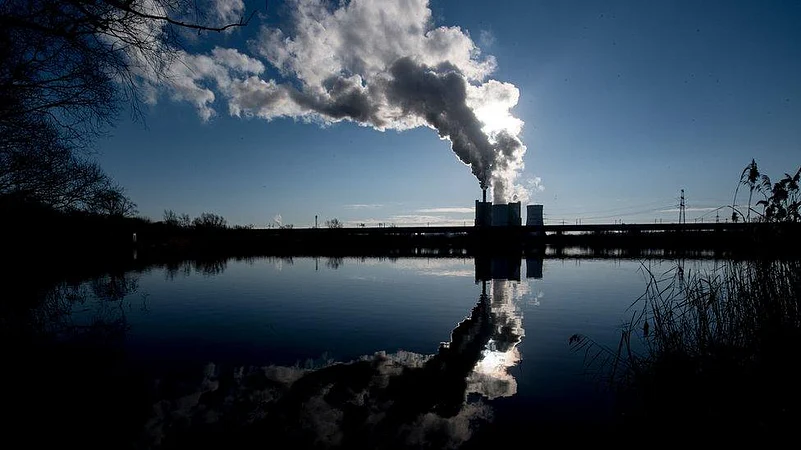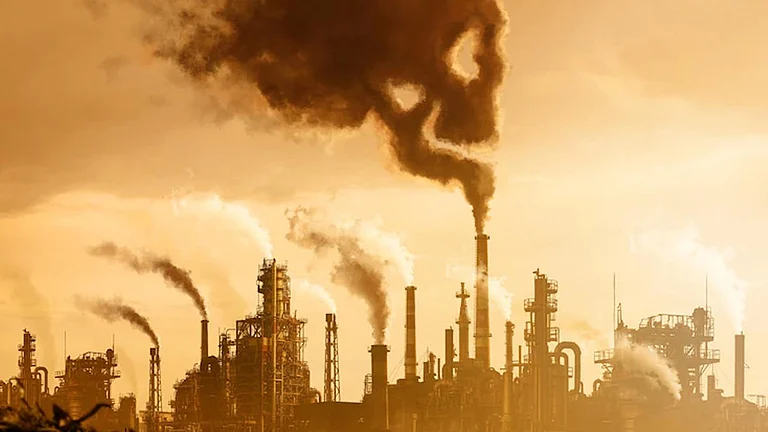The United Nations Environment Programme’s (UNEP) Emissions Gap Report 2024, titled “No More Hot Air...Please!”, reveals crucial insights into India's emission trends, underscoring the challenges and disparities in global greenhouse gas (GHG) emissions. India was responsible for GHG emissions of approximately 2.3 billion tonnes in 2023, equivalent to about 8% of the global total, and they increased by 6.1% demonstrating the growth as the number one most populous country and its development needs for energy. However, India's per capita emissions remain relatively low at 2.9 tons of CO₂ equivalent (tCO₂e), significantly below the global average of 6.6 tCO₂e. This is in conformity with previous values of India’s contribution to emissions which is only 3% against countries such as the United States that have contributed about 20%.
The report pointed out the big picture of the G20 countries’ disproportionate share of emissions while the G20 without the African Union holds 77% of the emissions globally. Of these, several countries like China, India, and Indonesia are still on the rising slopes of the emission curve. For countries that have not reached top emission levels yet, swift cuts immediately after the peak will form a major part of their climate change pledges. As shown in this data, there exists an emissions split that has deepened global inequities; CDC authors assert least developed countries emit only 3 percent of total emissions while facing some of the most devastating climate impacts.
Rising Global Emissions and the Need for Immediate Action
The year 2023 marked a record high in global emissions, with an increase of 1.3% compared to the previous year. This growth in emissions highlights the continued reliance on fossil fuels and an ongoing gap between climate goals and actions. The report warns that unless drastic changes are made, the target established by the Paris Agreement of limiting global warming to 1.5 degrees Celsius above pre-industrial levels, is becoming increasingly unrealistic. To achieve the 1.5-degree goal, global emissions must be reduced by an unprecedented 42% by 2030. Even the less ambitious target of 2 degrees Celsius requires a 28% reduction by the same year. Without these reductions, the report predicts a worst-case scenario of 2.6 degrees Celsius of warming by the century’s end, which would be followed by severe consequences, including ecosystem collapse, extreme weather events, and widespread economic and social upheaval.
The Power and Transportation Sectors: Leading Emission Sources
According to the report, the principal source of global emission increase is cited in the power and transportation sectors which emerged as the biggest contributors to the emission of GHMs in 2023. Out of 55.4 total emissions the power sector contributed 15.1 GtCO₂e, while transportation contributed 8.4 GtCO₂e. Industry food production and agriculture also contributed to a moderate level with each accounting to 6.5 GtCO₂e. At the same time, the international aviation sector saw the highest post-pandemic surge in emissions, up 19.5%. This trend is indicative of why there has to be concentrated effort made towards emission reductions in these sectors in order not to exceed climate change goals.
National Climate Commitments and the Paris Agreement
Currently, 90 percent of the nations that signed the Paris Agreement have either revised or Plan B: Revising or replacing their NDCs to reflect the new climate action plans. However, only one country stepped up its targets since the negotiations in COP28 in 2023, leaving much doubt in the process. It is estimated that global emissions will increase up to 57 GtCO₂e in 2030, exceeding the levels implied by current NDCs. With the current set of policies and measures the global emissions trajectory is failing to meet even the more flexible targets, let alone the perfect limits proposed.
Opportunities for Climate Action: Renewable Energy and Reforestation
Nevertheless, UNEP’s report also identifies some of the possible paths to follow to meet climate objectives. Solar and wind energy have a pivotal role to play, with projections showing that by 2030, these renewable sources could account for 27% of total emissions reduction potential, rising to 38% by 2035. Also, forests present a major opportunity where reforestation and carbon sequestration efforts are expected to account for 20 percent of emissions reductions in 2030 as well as 2035. These sectors are important in terms of investment and policy to help drive forward the process of global decarbonization.
Addressing the Funding Gap for Climate Mitigation
Meeting these ambitious climate goals will require a six-fold increase in global mitigation investments, with the report urging the international financial system to prioritize climate efforts, especially in developing nations. Financial reforms and increased aid are crucial in enabling developing countries to adopt cleaner technologies, advance renewable energy, and implement efficacious climate adaptative measures. Without financial support, especially for climate-vulnerable regions, the global community will struggle to mitigate the impending climate crisis.
India’s Role in the Global Climate Framework
While India’s emissions have increased in line with its development needs, its relatively low per capita emissions and historical responsibility offer perspective in terms of the global emissions scenario. As one of the countries that have never reached the peak of emissions, India has to set out its climate responsibilities amidst its growth path. With its population heavily dependent on agriculture, India is acutely vulnerable to climate-related risks such as erratic monsoons and extreme weather events. The Indian Renewable Energy program can be said to be in compliance with UNEP because of the goals set in the renewable energy sector, particularly solar and Wind.
The Urgent Need for Collective Action
While countries are preparing for the COP30 event in Brazil, UNEP’s report releases the need for urgent action to address the footprint and the gap between the agreed climate targets and the progress realized. As the 1.5-degree Celsius limit is quickly becoming a pipe dream, world policymakers need to operate at a higher level, work more energetically on reducing emissions, and produce and implement sustainable legislation while investing millions and billions of dollars in climate change solutions. The report also notes that outcomes worsen progressively as the moment of reckoning is pushed over time, with reductions needed in coming years as high as 15 percent per year, in relation to the 1.5-degree scenario, in case no action is taken now.
The Emissions Gap Report 2024 makes a plea for more and better-coordinated action to mitigate the climate crisis. By increasing renewable energy, reforestation, better financial support, and lowering emissions in relevant areas of the economy, the world can change course. There is a need to integrate development objectives with sustainability objectives to help the achievement of climate goals for India and other G20 countries.



























